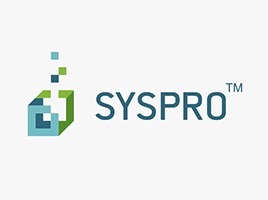As we enter the second year of the Covid-19 pandemic, digital transformation remains on the tip of many tongues in the technology industry. With new virus waves, continued supply chain uncertainties, and ongoing labor shortages, many small and medium-sized enterprises (SMEs) are looking for digital transformation to future-proof their businesses. However, with so many new technologies, new strategies, and, of course, implementation horror stories circulating, business leaders can be overwhelmed about how to begin.
Here are three steps SMEs should take when preparing their digital transformation roadmap:

Define the starting point and transformation requirements
A clear starting point needs to be defined at the onset. A critical first step in defining an organization’s starting point is working with its technology leaders to outline the company’s current requirements, then measuring the capability of the proposed tool to meet these requirements. Any shortfall here identifies a gap. Once requirements and gaps are defined, the organization can better understand where to begin the transformation process.
Defining transformation requirements is a pivotal first step because this is the point where business leaders need to make critical decisions around which current technologies, solutions, and processes will be retained and which components will be shelved in favor of new options. For example, a preferred and/or proprietary system may already be handling specific tasks, like customer relationship management or material requirements planning. The organization may want to integrate this existing functionality rather than replace it. For the technologies that make the cut, the organization needs to determine how they will be integrated into the future digital ecosystem. Right from this first step, the organization is beginning to define the scope of the overall integration complexity.
Define where the business wants to go
Once the starting point and necessary requirements are defined, the next phase centers on outlining what types of new features and capabilities the company needs to add. Subject matter experts can highlight and define anticipated industry trends and needs, and the new system can be planned for the future industry landscape.
In this step, the organization further defines the gaps it needs to overcome in its transformation journey as well as in a business context. The organization must strategize its digital transformation with the future state of its industry in mind. As technology and associated capabilities evolve rapidly, organizations that transform their operations with only the present landscape in mind will risk failure from early obsolescence.
Define what the future digital ecosystem will look like
The thing about technology targets is that they are continually moving. Once the organization has completed its initial digital transformation process, it may realize that previous working styles have become obsolete.
The organization needs to clearly map out new guidelines for how leaders and employees work together. For example, if the organization deploys a new enterprise resource planning (ERP) solution, it will be crucial to understand which tools need to interact with other tools and, accordingly, which departments need to sync with other departments to ensure data is shared throughout the organization. This level of future interaction will probably be much higher than currently imagined.
At this stage, communication becomes paramount: communication around how the organization is sharing data, voicing any challenges around how data is shared (and quickly addressing challenges with their technology provider and subject matter experts), and flagging what is working well in the data sharing process.
At a high level, a digital transformation brings a tidal wave of new data sets in-house. If this data overwhelms the organization, it can be a recipe for failure. It is critical to futureproof operations by enabling a steady and transparent flow of communication between all data providers. Once business leaders feel comfortable with communicating around their vast data sets, the organization can begin deriving valuable business insights from its data, realizing the full potential of its digital transformation.




